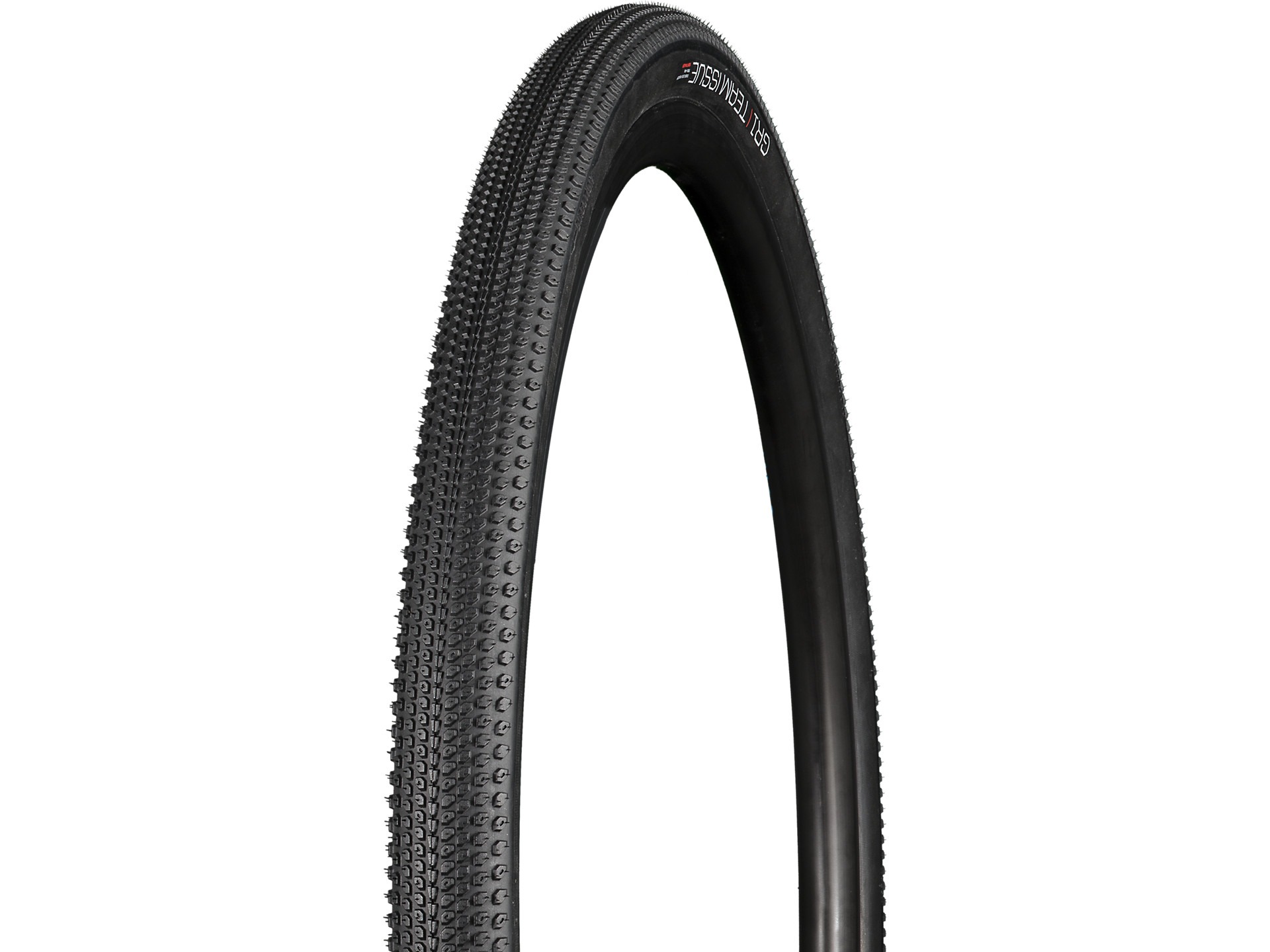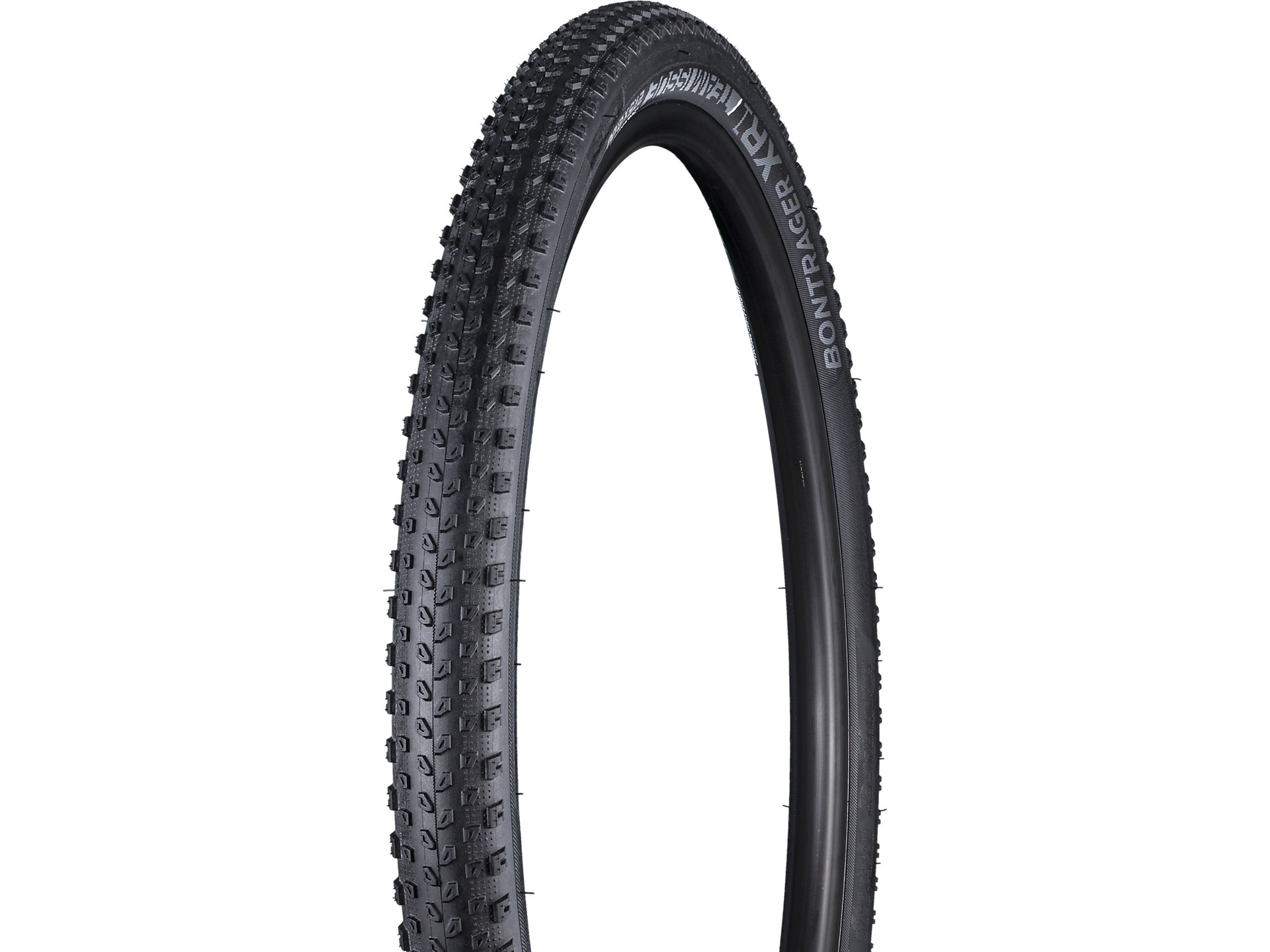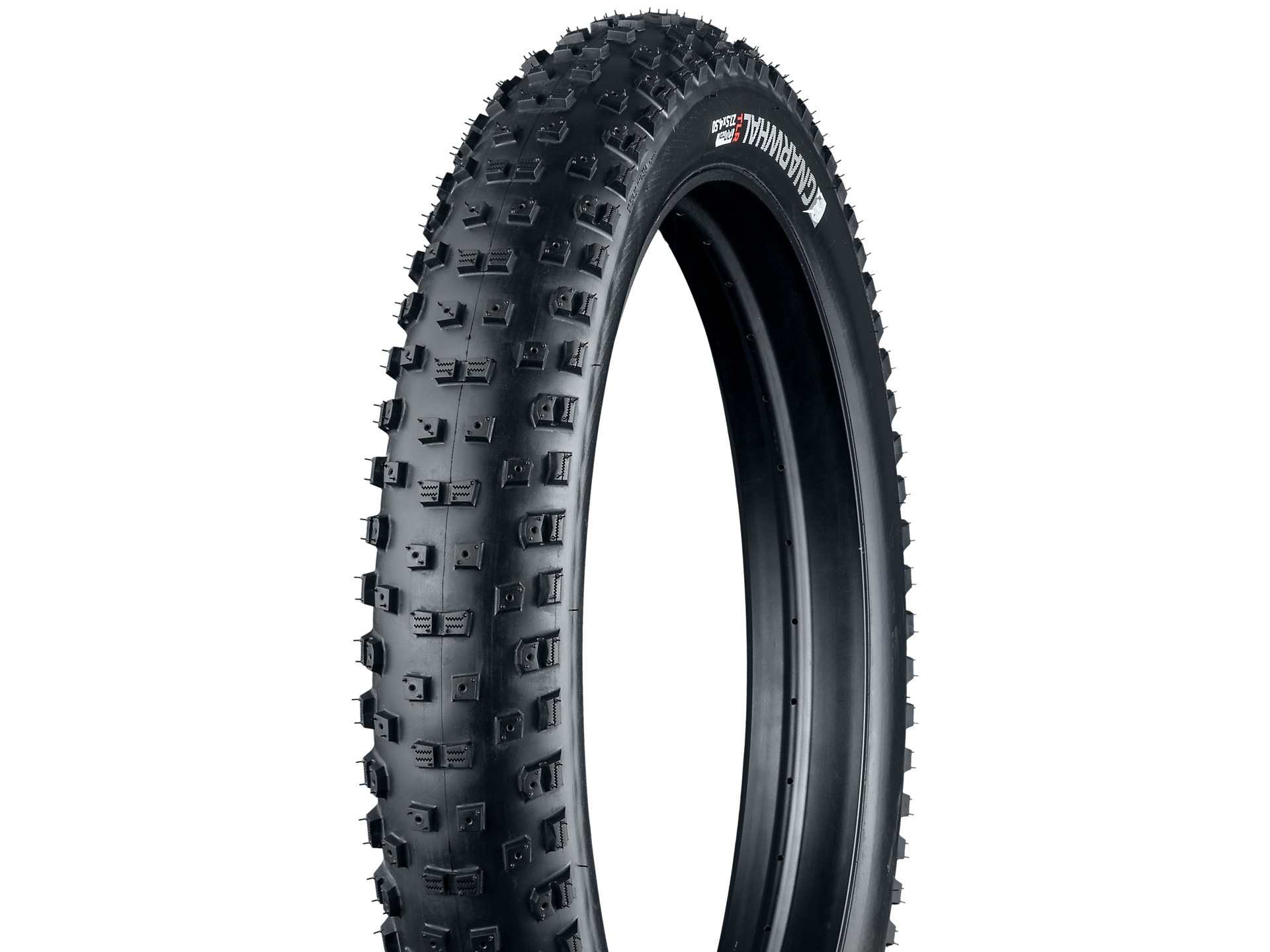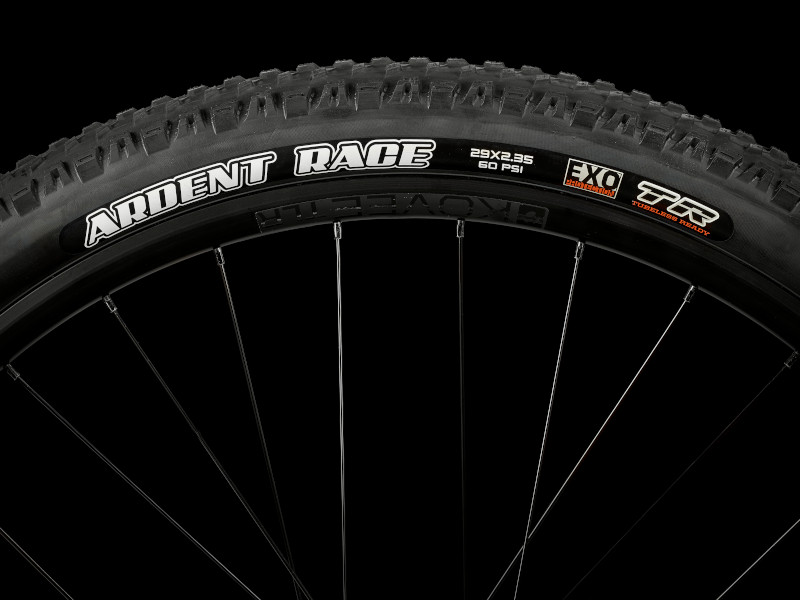Bike Tire Sizes Explained
Whether you are repairing your bike or upgrading your current set-up, choosing the right tires is crucial for a safe and enjoyable ride. As the only part of the bike that makes contact with the ground, tires can make a big difference to performance and comfort. This guide to bike tire sizes provides all the answers about how to choose bike tires based on your bike type and riding preferences.
Take a look at the bike tire size chart to easily compare tire sizes and their specifications. If you are searching for a new bike, explore the bike size chart to find your perfect fit. Keep reading to learn more about bike tire sizes, or shop all bike tires here to browse the numerous options available.
Bike tire size chart
| Tire Size | Width | Type |
|---|---|---|
| 29” (ISO 622) | 2.2”-3” | Mountain |
| 700C (ISO 622) | 23mm-45mm | Road/gravel |
| 27.5” (ISO 584) | 2.1”-3” | Mountain |
| 3.7”-5” | Fat bike | |
| 650b (ISO 584) | 2.2”-3” 23mm-47mm | Gravel/touring |
| 26” (ISO 559) | 1.6”-3” | Mountain |
| 3.7”-5” | Fat bike |
Wait, what is ISO?
The most reliable description of a tire’s size is the ISO number that tells the diameter of the tire at the tire bead (the inner edge) in millimeters. The International Standards Organization developed this system to make tire sizing consistent across manufacturers.
Standard bike tire sizes explained
The most common tire sizes on modern adult mountain bikes are 27.5” and 29”, and the standard road and gravel tire sizes are 700C and 650B.
Keep in mind that bike tire size is dictated by the wheel itself, so the following sizes and their performance characteristics come mainly from the wheel diameter.
That being said, choosing between tire-specific factors like width, tread, and construction is how you really dial in your ride. More on that later in the article.
700C bike tires
700C is the most common tire/wheel size for road bikes. Commuter and gravel bikes often utilize 700C as well.
700C tires with narrow widths and smoother tread are better for speed on pavement, and larger widths and tread is better for control on rougher surfaces.
29 inch bike tires
29 inch is the largest mountain bike tire/wheel size available, and it's ideal for faster top speeds and better rollover capability.
Shorter riders may find them unwieldy, but this tire size has become popular in most styles of mountain biking.
27.5 inch bike tires
27.5 inch is the other most common modern mountain bike tire/wheel size.
27.5 inch tires are more nimble than 29ers, so riders who prefer agility over top speed typically like this size.
650B bike tires
650B tires are typically found on gravel and touring bikes. They have the same inner diameter as 27.5” mountain bike tires but 650B tires are more geared towards all-terrain, gravel, and adventure riding instead of trails, hence the separate name.
26 inch bike tires
26" used to be the tire size for almost all adult mountain bikes, but it’s less popular on adult bikes today.
You can sometimes find them on bikes meant for preteens/teens who aren't quite able to ride adult bikes yet. It's also a common size for those traditional models that are still around.
Kids bike tire sizes
Kids bike tires sizes usually range from 12 inch to 24 inch tires. Some bigger kids can fit on 26 inch wheels, too. Check out our bike size guide for more info.
Bicycle tires by type

Road bike tires
Road tires are smooth and have minimal tread to keep rolling resistance low. All modern road bike tires are sized as 700C and typically vary in width from 23mm to 32mm. 700C tires meant for paved roads that are wider than 32mm wide usually are designed for commuter and hybrid bikes.
The standard 25mm width offers plenty of grip, rolls fast, and weighs much less than beefy mountain bike tires. Wider tire sizes like 28mm and 32mm are increasingly popular due to their low rolling resistance and bigger volume to absorb road buzz.
27” (ISO size 630) is an outdated tire size for older road bike models. It has a slightly larger inner diameter than 700C so these tires won’t fit properly on modern rims. There are still plenty of old road bikes around, though, so some brands still manufacture 27” tires. Shop all road bike tires here to find the perfect set for your bike.

Gravel bike tires
Tread pattern and tire width are the among most important decisions to make when choosing gravel bike tires.
Gravel bikes normally come with 700C wheels, but many models have the option of fitting 650b wheelsets. 650b wheels are a bit smaller which allows you to fit wider tires in the frame for better grip and cushion on rough roads.
As gravel biking increases in popularity, so too does the average width of gravel-specific tires. Previously around 35mm, the new standard width is 40mm and that size comes stock on most modern gravel bikes. Riders that tackle especially difficult terrain can choose 42mm or 45mm sizes or install 650b wheels to fit bigger tires.
Not all gravel is created equal and appropriate tread pattern customizes your tires to perform well in different conditions. Low-profile tread is ideal for riding on fine gravel, dirt roads, and in dry weather. Semi-slick gravel tires might look similar to road tires, but they are much wider. Once the terrain gets tough or there is mud, heavy tread with a knobby texture is the right choice. These high-traction knobs are typically much smaller and closer together than those on mountain bike tires.

Mountain bike tires
Mountain bike tires are measured in inches and range in width from 1.6” to 3” with plenty of distinct tread patterns to suit different terrains.
Before you decide on a specific tire, though, you’ll need to narrow your search according to the size of your wheel— 26”, 27.5” or 29”.
Generally speaking, the more technical the terrain, the wider the tire. XC racing or recreational mountain bikes that ride on lighter terrain can get away with widths between 1.6” to 2.2”. The trickier conditions and bigger obstacles in trail or downhill riding mean only tires that measure 2.3”+ will provide enough traction and shock absorption.
Tire tread varies widely among mountain bike tires. XC racing tires need to roll fast, so they have a low-profile tread pattern with knobs placed close together. Trail, enduro, and downhill tires have larger individual knobs with lots of space between them to better interlock with the ground. Tread patterns in the center of the tire are often different from the tread around the edge. A smoother central texture is great for straight-line speed while large knobs at the edge of the tire can dig into corners for increased grip.
Many mountain bike tires are tubeless, meaning they can hold air without an innertube and are less prone to punctures. This is a popular tire option because riders can run lower bike tire pressure for better traction and don’t have to worry about trail debris poking a hole and causing a flat tire. Other specialty options are studded tires that integrate small metal spikes into each knob to dig into ice or snow. Studded tires can damage dry pavement so are reserved only for icy conditions when grip is at a minimum.

Fat bike tires
Fat bike tires are the largest bike tires available, ranging from 3.7” to 5.2” in width. The most common tire width is 4” across, which is sufficient for tough terrain like dirt, snow, and sand. Wider options will be heavier and slower, but offer better traction to navigate loose terrain.
Fat bike tires come in two diameters that will fit either 26” or 27.5” rims. Anything bigger than that would be a monstrous tire that would be too difficult to steer. Heavy tread patterns with large, widely-spaced knobs give more grip but increase friction with the ground.
Most fat tires are designed for traction, but some have less extreme tread that’s perfect for light trails or smooth dirt. Technically a type of mountain bike tire, fat tires also come in tubeless and studded versions.
How do I know my bike tire size?

It's easy - just take a look at the sidewall of the tire. Riders can easily locate their bicycle tire’s dimensions on the tire sidewall. The measurements are printed or embossed onto the tire (embossed can be difficult to see).
This system allows riders to quickly identify tire size, whether they are shopping for new rubber or figuring out their own tire’s measurements.
In this example, the tire size is 29x2.35. Ardent Race is the model, and EXO and TR provide information about the construction and style of the particular model. Different companies display this information in different ways.
Bike tire dimensions: What does 700x40c mean?
Tire dimensions are described using two numbers— for example 700 x 40c. The first number refers to the diameter and the second number is the tire width.
On a 700x40c tire, the first number indicates that the outside diameter is approximately 700 millimeters. Tread and tire width can affect the overall diameter, so the 700 is always a rough estimate.
The second number is the width, typically given in millimeters on road bikes and inches on mountain bikes. This measurement is important for choosing a tire that will both fit onto the wheel rim and won’t be too large and rub against the frame.
But what does the ‘c’ mean?
We use the ‘c’ to refer to road bike tire sizes. Way back when, French tire manufacturers made road tires in different widths— 700A, 700B, and 700C. The 700C option became the most popular and halted production of the other sizes. And don’t be fooled—the ‘c’ isn’t short for ‘centimeters’. These days, when brands list tire dimensions, the ‘c’ is paired with the width measurements, as in 700x40c.
On a mountain bike, 27.5 x 2.25 means the tire has a diameter of 27.5 inches and a width of 2.25 inches.
Does bike tire width matter?
The tires are the only place where bikes make contact with the ground, so tire width is crucial to traction and speed. The wider the tire, the more rubber there is touching the road, trail, or other surface. Tires that are relatively wide, such as mountain bike or fat bike tires, use the additional surface area to get extra grip in tricky conditions. Wide tires can allow bikes to safely navigate dirt trails, snowy paths, or muddy routes.
Road bikes use narrow tires to reduce friction with the pavement. Since roads are smoother, harder surfaces than mountain bike trails, wide tires and their added weight aren’t necessary for top performance.
Historically, road cyclists used the skinniest tires available (as narrow as 19mm!) to save weight and be more aerodynamic. They thought that wider tires would also create more friction and slow the bike down. More recently, though, studies have shown that wider tires actually offer lower rolling resistance than ultra-slim tires. This means that tires around 25-28mm roll faster than the traditional 23mm racing option.
Does bike tire tread matter?
Tire tread makes a huge difference to a tire’s performance in specific conditions and terrains. Working together with tire width, tread patterns tailor a tire to certain situations, such as road racing or downhill mountain biking.
Mountain bike tires typically have a heavy tread pattern. Their knobby texture is composed of protruding bits of rubber alongside inset grooves that create more surface area to interlock with the trail and create grip.
Road bikes tires, on the other hand, have little to no tread. Contact with the textured pavement provides sufficient traction and any additional tread would increase friction and slow the bike down. Even in wet conditions, road bike tires are too narrow to hydroplane, so a heavier tread pattern wouldn’t make much of a difference.
More bike tire FAQs
When should I replace bike tires?
It’s time to replace a bike tire when the tread pattern is ‘bald’ or worn down enough that you notice a loss in grip. Riders should also get new tires if there are cuts, slashes, or cracks in the rubber which can occur due to normal use over time and make the tire prone to punctures.
What are winter bike tires?
Winter bike tires help riders achieve traction in tricky, low-friction conditions on ice or snow. Wide mountain bike tires or fat tires are appropriate in winter because of their extra surface area to find grip. The most serious winter tires are studded, meaning they have a heavy tread pattern with small metal spikes placed in each knob to dig into the ice.
Will a 29 inch tire fit a 700C rim?
While technically the same ISO size and inner diameter, most 29” tires won’t fit a 700C rim. 29” mountain bike tires are much wider than 700C tires, so they can’t be installed on narrow road bike rims designed for skinny, low-volume tires.
Are 27 inch wheels the same as 700c?
The older 27” size of road bike wheels are slightly larger than modern 700C road rims. 27” wheels have an ISO measurement of 630 while the standard road bike wheels of today have ISO size 622, meaning they are around 8mm smaller than the outdated size. Depending on the specific tire and rim combination, it can be possible to interchange sizes, but it isn’t recommended.
Do bike tires have a direction?
Yes, bike tires have tread patterns that have a specific direction and work best in that orientation. Even road bikes that have slick or extremely low-profile tread include a designated direction on the sidewall to indicate how they should be installed. Mountain bike tires have deep grooves and large knobs that provide maximum traction only when pointing in the right direction.
How do tubeless bike tires work?
Tubeless tires are installed on a tubeless-compatible rim and filled with enough sealant to quickly seal any punctures that might happen out on the trail. The tire hooks into the rim and is rapidly pumped with air so the tire is held in place by the high bike tire air pressure. The sealant rolling around in the tire plugs any puncture since it dries immediately when it comes in contact with the outside air. Shop bike tire accessories like pumps and sealant here.
